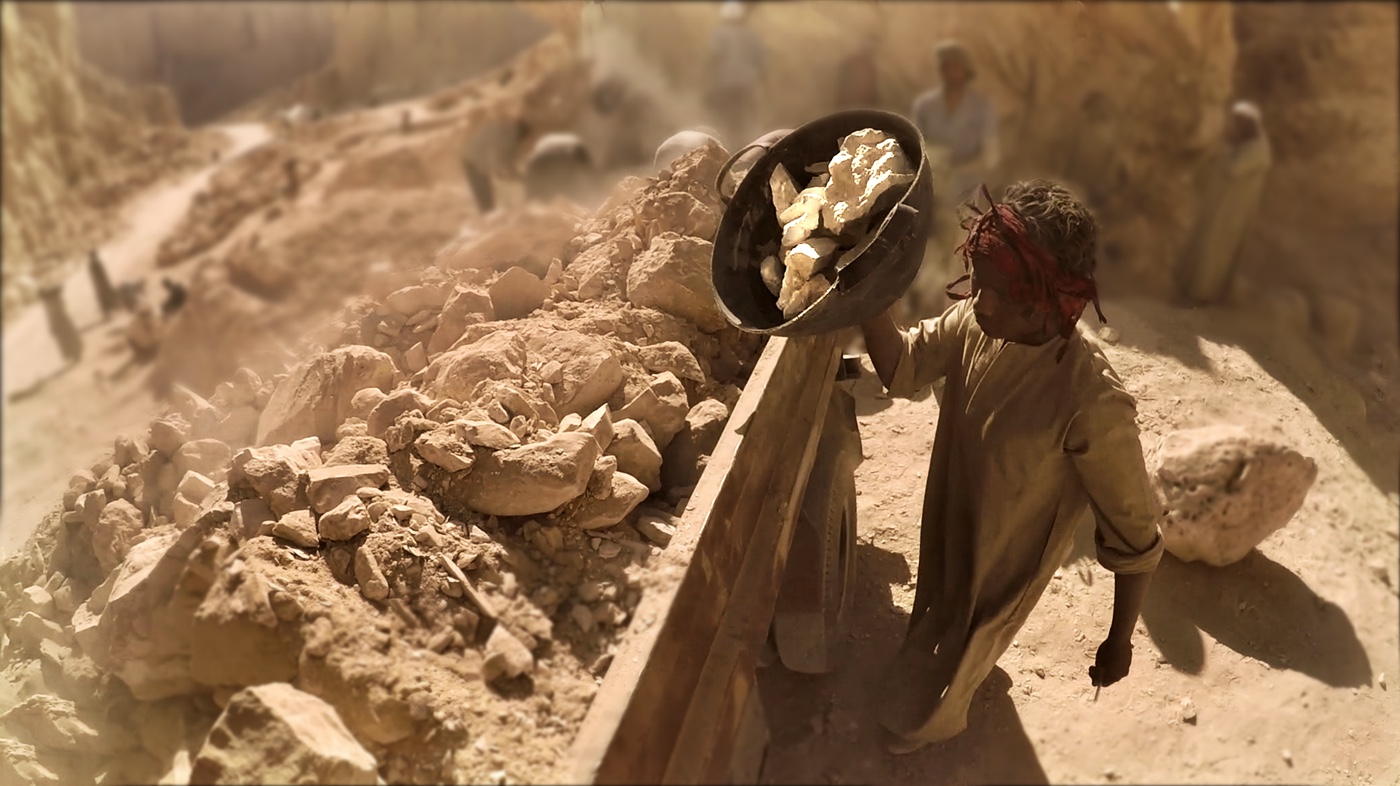Have Archaeologists Discovered the Tomb of King Tut's Wife? Maybe.

Since January, about 100 Egyptian workers have been excavating an area in the western valley of Egypt's Valley of the Kings that may contain the tomb of King Tut's wife. So far, archaeologists have remained tight-lipped about their findings.
However, the Discovery Channel, which is funding the research, has released a photo of these excavations taking place in an area where a radar reading suggests a tomb entrance is located. [See Photos of Egypt's Valley of the Kings]
A royal entrance?
Previous excavations in the area had revealed four foundation deposits that contained pottery, flint blades and the skull of a cow. Deposits like these were often buried by the ancient Egyptians before they began construction of a tomb, archaeologistssay. Additionally, radar scans near those deposits showed a structure that may be the entrance to a tomb.
The deposits are located near the tomb of Ay (who reigned from 1327 B.C. to 1323 B.C.), a pharaoh who succeeded Tutankhamun(who reigned from 1336 B.C. to 1327 B.C.). After King Tut's death, his wife, Ankhesenamun, remarried Ay, and archaeologists have speculated that if an undiscovered tomb is present, it could belong to her.
Zahi Hawass, an archaeologist and former Egyptian antiquities minister who is leading the excavations, told Live Science that he cannot comment publicly about what his team has found at this time. In Egypt, archaeologists often wait until the antiquities ministry gives them permission to announce a discovery.
Multiple tombs?
According to a statement from the Discovery Channel that was emailed to Live Science, the company has "exclusive" access to film the excavations, which they hope to turn into a series of documentaries.
There could be several undiscovered royal tombs in the western valley, the Discovery statement said. Hawass and other archaeologists have told Live Science in the past that this is possible, although the current excavations are focusing on finding just one tomb — the one whose entrance may have shown up in radar scans.
Sign up for the Live Science daily newsletter now
Get the world’s most fascinating discoveries delivered straight to your inbox.
"Led by renowned archaeologist Dr. Zahi Hawass, the crew of more than one hundred Egyptian workers are digging in the largely untouched western portion of the valley, where leading archaeologists believe several royal tombs lie hidden," Discovery Channel representatives said.
Hawass will also discuss the team's excavations in a lecture scheduled for April 20 in Tucson, Arizona, during the annual meeting of the American Research Center in Egypt.
Originally published on Live Science.

Owen Jarus is a regular contributor to Live Science who writes about archaeology and humans' past. He has also written for The Independent (UK), The Canadian Press (CP) and The Associated Press (AP), among others. Owen has a bachelor of arts degree from the University of Toronto and a journalism degree from Ryerson University.









